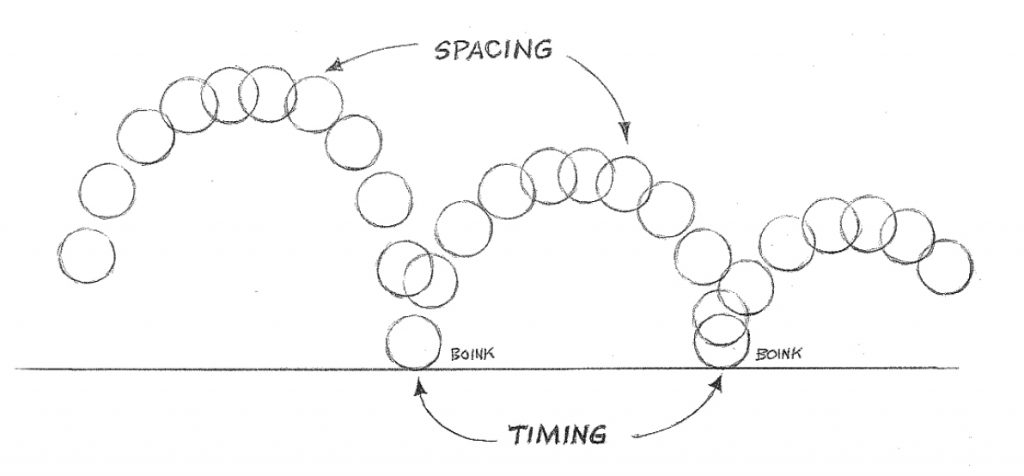
Using one of the animations from my short film The King of Banana Land, and an exercise I made to teach at an animation workshop organized by Venezuela’s National Film School, in this post I try to give a little explanation of some of the most important animation principles in a practical way. By watching both videos, you can see how the techniques explained below were used for each animation.
Exercise #1 - GORILLA ATTACK
Extreme: a drawing that describes the beginning pose, ending pose, or when a change of direction occurs in the movement. These drawings are key to define the action and are usually made by the main animator.
Inbetweens: intermediate drawings made between two extremes to create a fluid transition from one to the other. These drawings are usually made by the animation assistant.
Spacing: variation of the speed within the movement, animated by varying the distance between the drawings on the screen. When the drawings are close to each other, the movement will be slower if the timing (number of frames/drawings per second) stays the same. Movements are usually slower (drawings are closer to each other) at both the beginning or the end (slow in and slow out), or when changing directions (look at how the gorilla’s arm advances just a little in the first inbetween at the beginning of the movement).

Follow through: describes the way parts of the body continue to move after the main body stops. This is really useful to make the stopping of movements less sudden and more credible. When a character’s feet stop, the rest of the body will continue to move a little before returning to its final, resting position.
Exercise #2 - TOTORO SQUASH AND STRETCH
Drag: the action of delaying the movement of body parts in relation to the main body. Hair and drapery always stay behind when the body moves.
Overlapping action: a very similar concept to drag. It refers to the offset between the position of the main body and that of the parts which stay behind (like hair or drapery). These parts will eventually catch up and continue to move after the main body stops (follow through), “overlaping” that action.
Anticipation: a preparation for the main action or movement. It usually includes a movement in the opposite direction and can make good use of the squash and stretch teachniques.
If you would like to know more about animation teachniques, I wrote a detailed review about what I am sure is the best animation book any animator or illustrator interested in the study of movement can use: The Animator’s Survival Kit by Richard Williams.
If you have any questions about the above animation principles or would like to know more about the book, please let me know in the comments 👍
